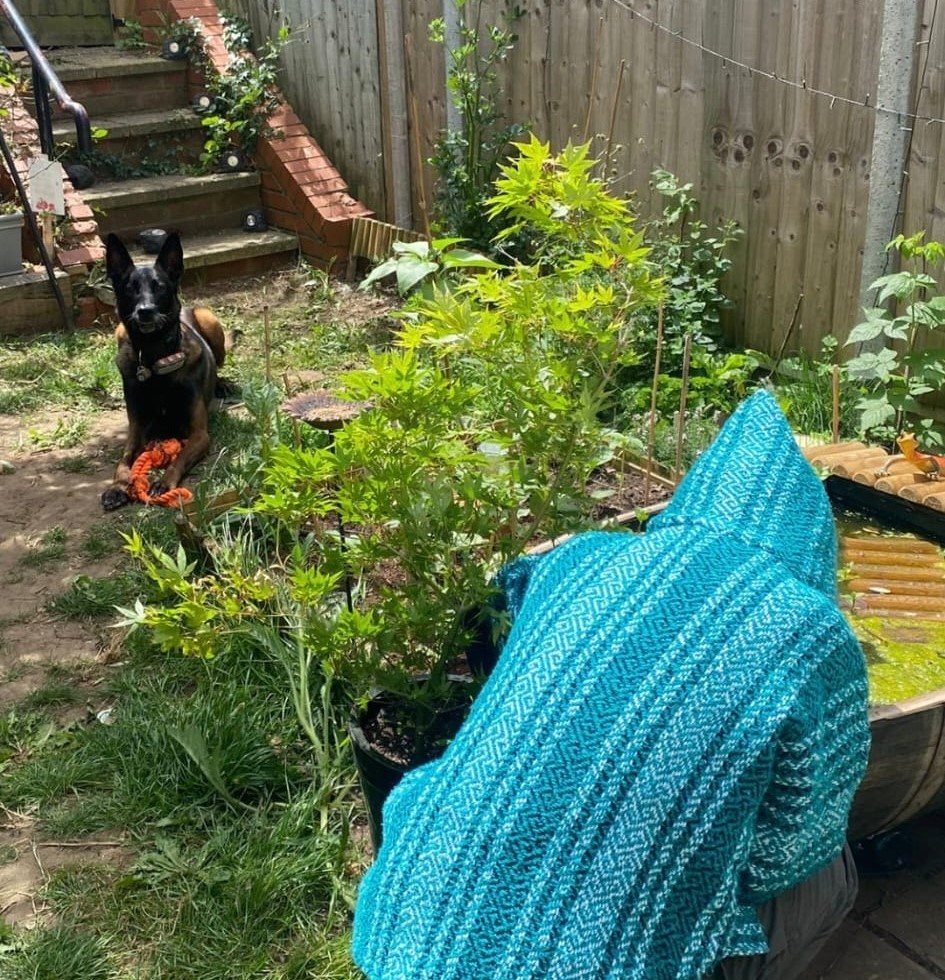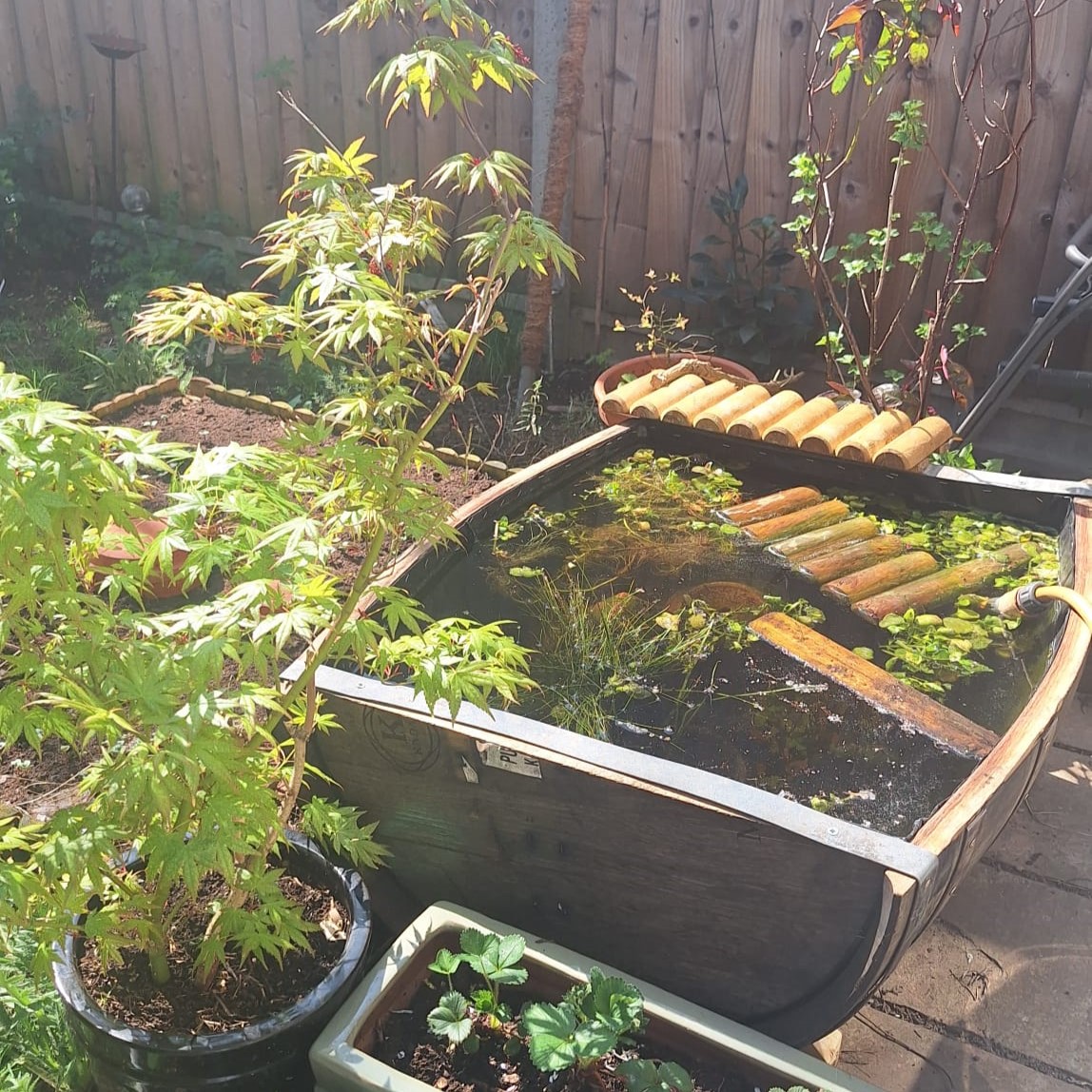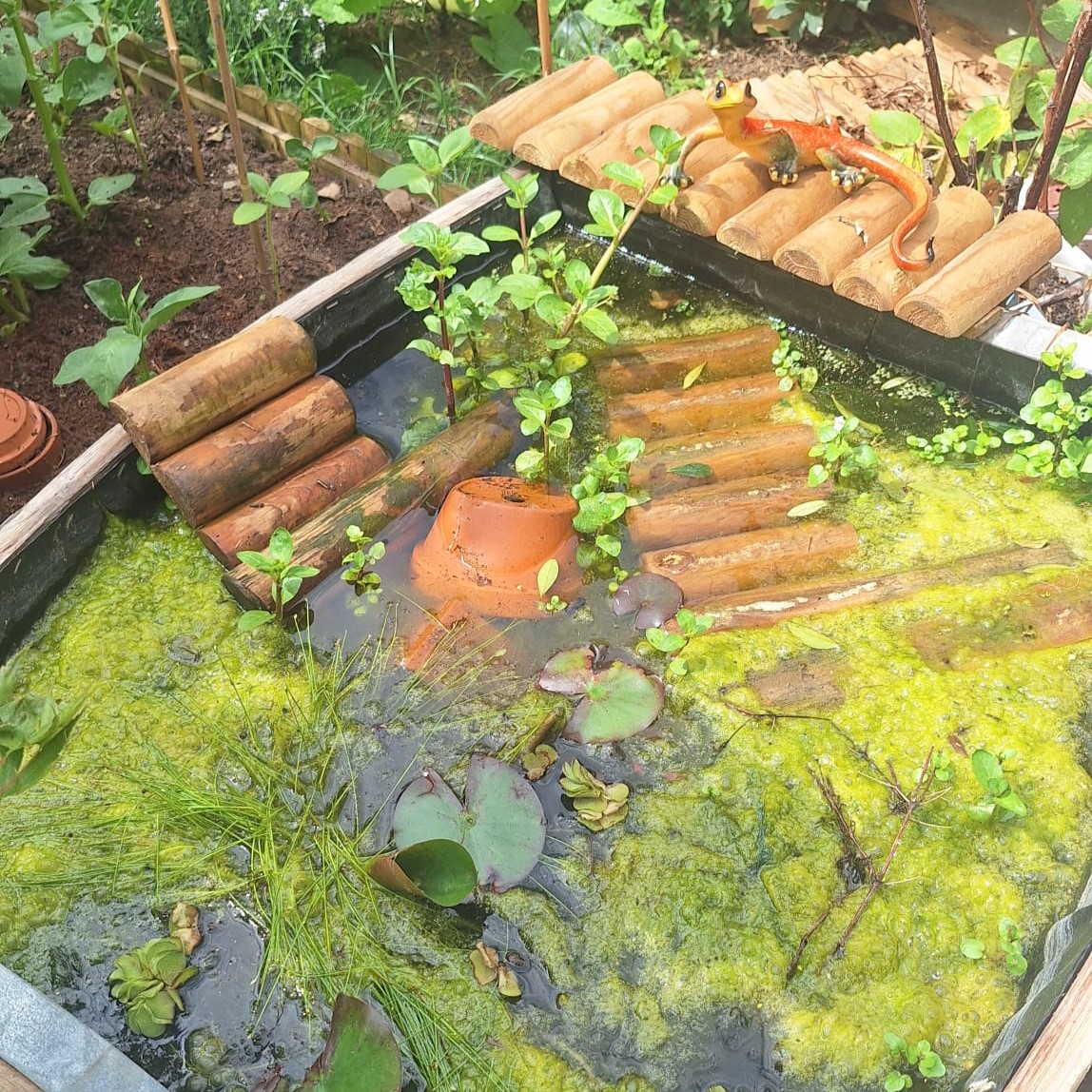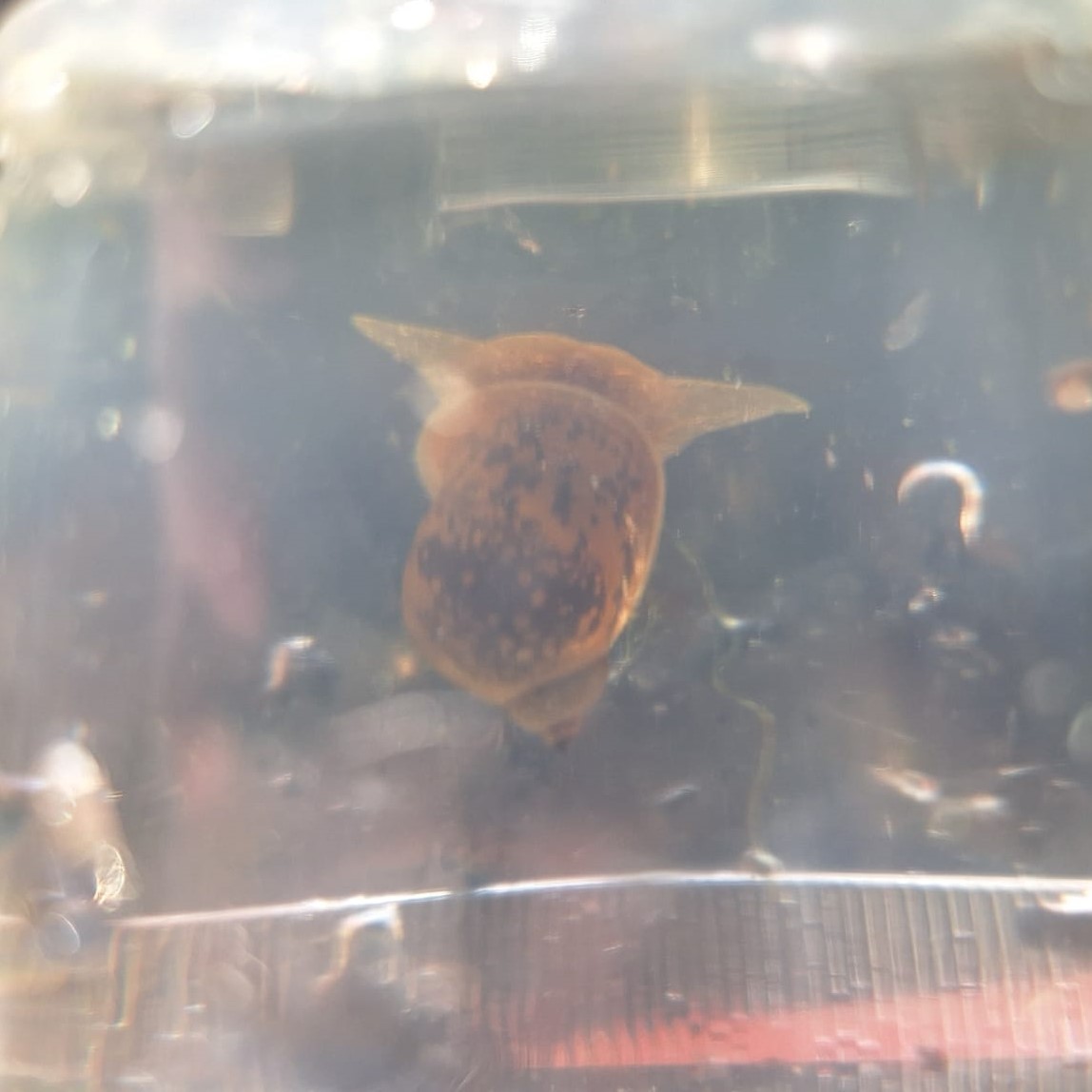Creating a wildlife pond
A few months ago, I embarked on a small project-transforming an old whiskey barrel into a thriving wildlife pond. This little water garden has quickly become a buzzing ecosystem in such a short amount of time
Wildlife ponds are incredibly beneficial, both for nature and gardeners alike. They provide vital habitats for a range of creatures helping to boost local biodiversity. For gardeners, a wildlife pond acts as a natural pest control hub, attracting predatory insects like dragonflies that keep harmful bugs at bay, and amphibians which like to snack on slugs. I have struggled to grow vegetables in this garden, because there are a lot of slugs and snails. Plus, ponds help create a balanced garden ecosystem, supporting pollinators and improving overall garden health.

If I can re-use or upcycle something I will. Using old barrels for wildlife ponds is a fantastic option, especially if space is limited or you want a manageable, contained water feature. Whiskey barrels are naturally weather-resistant, sturdy, and compact, making them perfect for patios or small gardens. Their deep structure allows for a healthy water volume that supports aquatic life while being easy to maintain.
I filled my whiskey barrel with a garden hose and let it sit for a few days to ensure the water settled and any chemicals dissipated. Then, I added a selection of native aquatic plants:
- Hornwort - great for oxygenating the water and providing shelter for tiny aquatic creatures.
- Alba Water Lily - adds beautiful blooms and shade, which helps regulate water temperature.
- Pink Flowering Rush - a striking addition that offers habitat for insects and frogs.
- Brooklime - I transplanted this from a barrel pond in my grandparents’ garden to help jumpstart the ecosystem with familiar native plants.
A great tip I picked up on Facebook forums was to add some salad watercress to the pond. I bought a reduced packet from Asda for 20p, and it rooted really well, adding fresh greenery and more habitat space.

Each plant plays an important role in the pond’s health. Hornwort oxygenates the water, preventing algae blooms. Water lilies provide cover, shade out algae and keep the water cool, which benefits fish and larvae. Flowering rushes attract pollinators and offer shelter for amphibians. Brooklime is a native aquatic plant that supports small insects and helps stabilize pond edges, while watercress grows quickly and helps absorb nutrients, maintaining water clarity.

As time went on, I started getting problems with algae growth. The plants weren't cutting it, so I added some snails- both flat and great ramshorn varieties- to help keep the pond clean by eating algae. I later discovered some wandering snails had hitched a ride, adding to the pond’s diversity. I also introduced Salvinia natans, a floating plant that’s not native but has sentimental value as I enjoyed growing it in my childhood. It adds a lovely texture to the pond’s surface, and multiplies really quickly
In just a few months, the pond is buzzing with life: hoverfly larvae, water beetles, snails, cyclopidae, midge, and mosquito larvae. Although fish aren’t always recommended for wildlife ponds, I’m considering adding a couple of small sticklebacks eventually to complete the ecosystem.

Creating a wildlife pond in a whiskey barrel has been a rewarding experience, providing a haven for wildlife and a charming feature for my garden. Whether you have a sprawling backyard or a small patio, a barrel pond is an accessible, eco-friendly way to support biodiversity and enjoy the calming presence of water